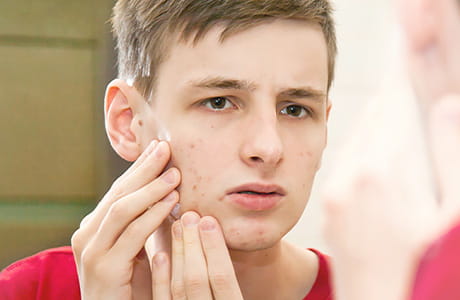The health benefits of sunlight
Step out of the shadows and enjoy the healing power of sunlight.
When it comes to sunshine, you can definitely get too much of a good thing. But as you slather on sunscreen (yes, it’s a must), it’s easy to forget that sunshine in moderation can benefit body, mind and spirit.
Think about it. Sunshine is practically a synonym for happiness.
Still not ready to throw open the curtains? Let’s check out the science behind sunlight’s power to heal and nourish us.
1 – Managing our moods
It’s not called a “sunny outlook” for nothing.
Light-sensing cells in your eyes are part of a circuit that sends signals to mood-influencing parts of the brain, explains Judith Snell, a physician assistant specializing in primary care. Sunlight hitting the cells triggers feelings of happiness and well-being. And sun exposure is linked to the production of serotonin — a hormone associated with boosting your mood. That’s why light therapy is often used to combat seasonal affective disorder.
Here in Geisinger’s Pennsylvania home base, we know what it’s like to face down a dark winter, maybe with the help of a light box. The warmer, sunnier months offer us a chance to step right outside and soak up some mood-mending rays the natural way.
2 – Take your vitamins
According to the World Health Organization, getting 5 to 15 minutes of sunlight on your skin two or three times a week can give you a healthy dose of vitamin D.
Those are broad guidelines, and they change depending on your skin tone and other factors, like whether you’ve had skin cancer.
But the bottom line is, the sun can deliver an essential nutrient right to your bare arms and legs.
What does vitamin D do? Among other things it:
- Supports bone growth
- Combats osteoporosis
- Reduces inflammation
- Regulates processes like cell growth and immune function
So, if you don’t get the bulk of your vitamin D from the sun, be sure to supplement from another source, like salmon, eggs or mushrooms.
3 – Is the sun good for your skin?
There’s no denying that too much sun can be dangerous for your skin. But some doctors are harnessing the sun’s positive powers, too, using carefully controlled UV radiation exposure to treat skin conditions like:
- Eczema
- Acne
- Psoriasis
Sunlight can also combat jaundice.
And researchers are exploring the use of sunlight to treat other autoimmune disorders including inflammatory bowel disease, rheumatoid arthritis, Hashimoto’s (thyroid) syndrome and a common form of lupus. That gives new meaning to the phrase “treatments on the horizon.”
4 – Sun: Friend or foe?
It’s always smart to practice sun safety, from slathering on the SPF to getting an annual skin checkup. And be even more careful if you take medications or have conditions that make sun exposure downright dangerous.
But remember that the sun isn’t anyone’s enemy. Along with sustaining life as we know it on the planet, it can nurture us personally, too, even if we’re just looking out the window at a cheerful, sunny day.
If you’re not sure how much sun is good for your unique situation, talk with your doctor.
Next steps:
Here's how to combat dry winter skin
Tips for growing a natural garden





